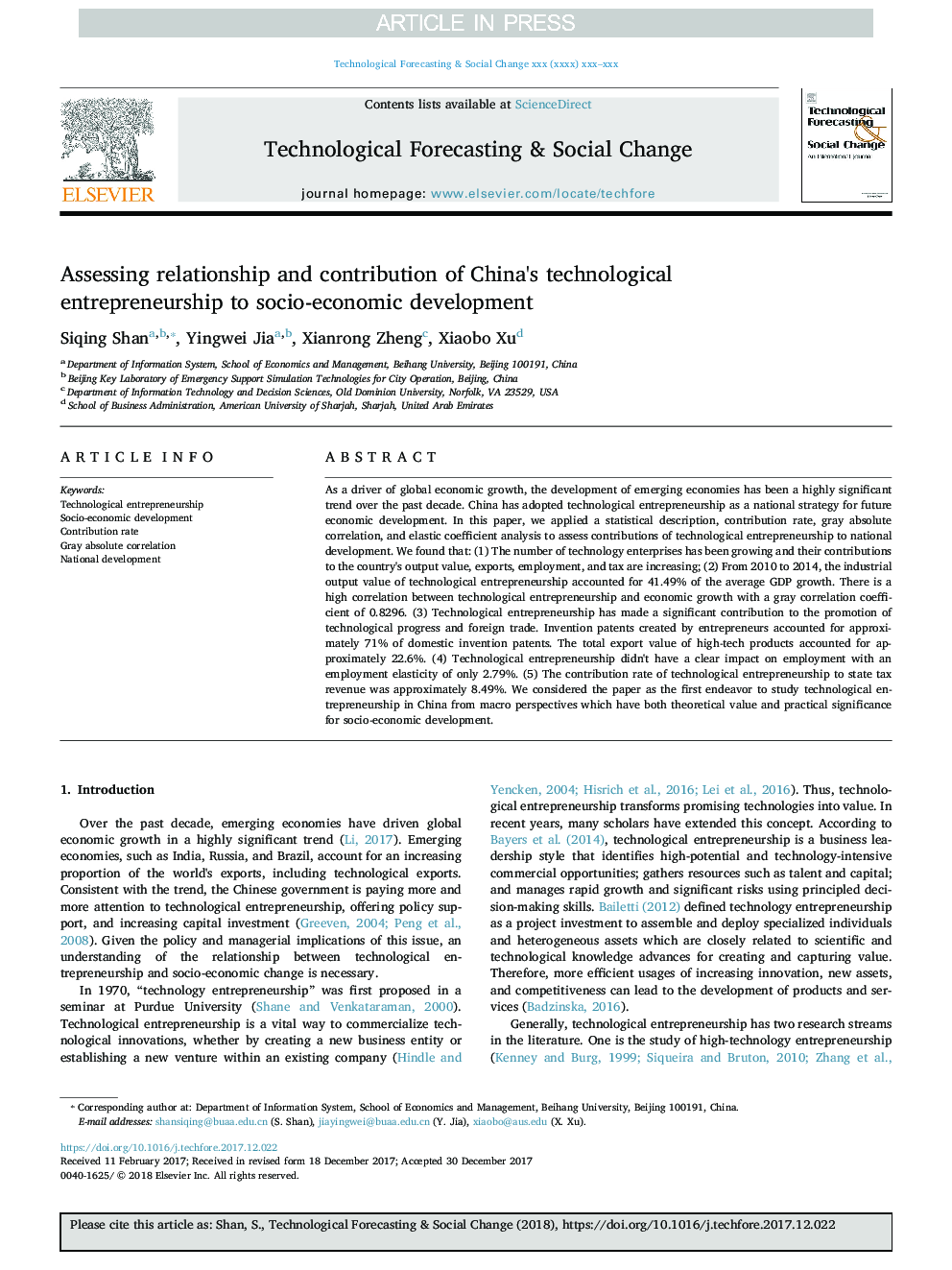| Article ID | Journal | Published Year | Pages | File Type |
|---|---|---|---|---|
| 9952888 | Technological Forecasting and Social Change | 2018 | 8 Pages |
Abstract
As a driver of global economic growth, the development of emerging economies has been a highly significant trend over the past decade. China has adopted technological entrepreneurship as a national strategy for future economic development. In this paper, we applied a statistical description, contribution rate, gray absolute correlation, and elastic coefficient analysis to assess contributions of technological entrepreneurship to national development. We found that: (1) The number of technology enterprises has been growing and their contributions to the country's output value, exports, employment, and tax are increasing; (2) From 2010 to 2014, the industrial output value of technological entrepreneurship accounted for 41.49% of the average GDP growth. There is a high correlation between technological entrepreneurship and economic growth with a gray correlation coefficient of 0.8296. (3) Technological entrepreneurship has made a significant contribution to the promotion of technological progress and foreign trade. Invention patents created by entrepreneurs accounted for approximately 71% of domestic invention patents. The total export value of high-tech products accounted for approximately 22.6%. (4) Technological entrepreneurship didn't have a clear impact on employment with an employment elasticity of only 2.79%. (5) The contribution rate of technological entrepreneurship to state tax revenue was approximately 8.49%. We considered the paper as the first endeavor to study technological entrepreneurship in China from macro perspectives which have both theoretical value and practical significance for socio-economic development.
Keywords
Related Topics
Social Sciences and Humanities
Business, Management and Accounting
Business and International Management
Authors
Siqing Shan, Yingwei Jia, Xianrong Zheng, Xiaobo Xu,
